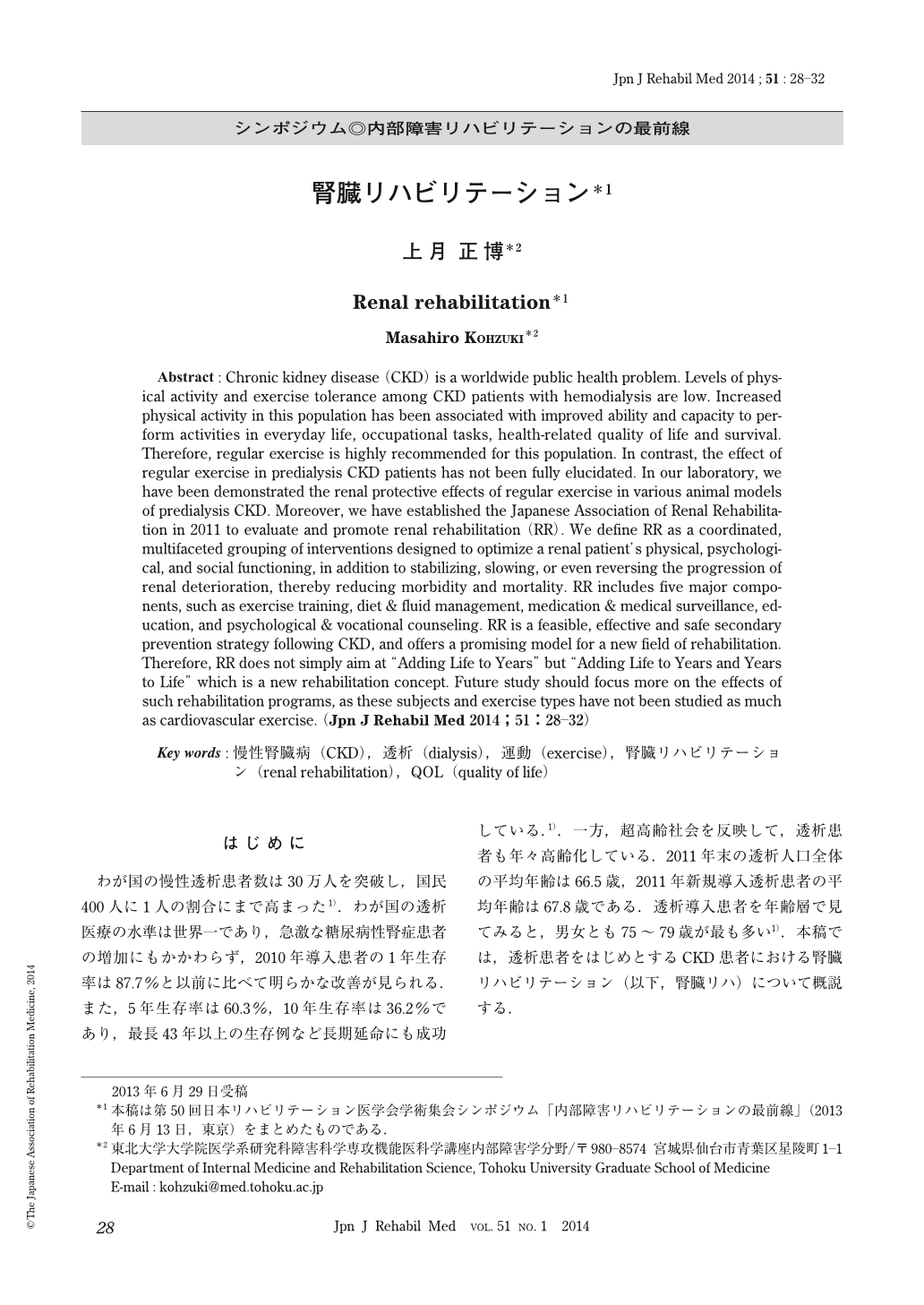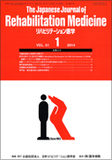Japanese
English
- 販売していません
- Abstract 文献概要
- 1ページ目 Look Inside
- 参考文献 Reference
はじめに
わが国の慢性透析患者数は30万人を突破し,国民400人に1人の割合にまで高まった1).わが国の透析医療の水準は世界一であり,急激な糖尿病性腎症患者の増加にもかかわらず,2010年導入患者の1年生存率は87.7%と以前に比べて明らかな改善が見られる.また,5年生存率は60.3%,10年生存率は36.2%であり,最長43年以上の生存例など長期延命にも成功している.1).一方,超高齢社会を反映して,透析患者も年々高齢化している.2011年末の透析人口全体の平均年齢は66.5歳,2011年新規導入透析患者の平均年齢は67.8歳である.透析導入患者を年齢層で見てみると,男女とも75~79歳が最も多い1).本稿では,透析患者をはじめとするCKD患者における腎臓リハビリテーション(以下,腎臓リハ)について概説する.
Abstract : Chronic kidney disease (CKD) is a worldwide public health problem. Levels of physical activity and exercise tolerance among CKD patients with hemodialysis are low. Increased physical activity in this population has been associated with improved ability and capacity to perform activities in everyday life, occupational tasks, health-related quality of life and survival. Therefore, regular exercise is highly recommended for this population. In contrast, the effect of regular exercise in predialysis CKD patients has not been fully elucidated. In our laboratory, we have been demonstrated the renal protective effects of regular exercise in various animal models of predialysis CKD. Moreover, we have established the Japanese Association of Renal Rehabilitation in 2011 to evaluate and promote renal rehabilitation (RR). We define RR as a coordinated, multifaceted grouping of interventions designed to optimize a renal patient's physical, psychological, and social functioning, in addition to stabilizing, slowing, or even reversing the progression of renal deterioration, thereby reducing morbidity and mortality. RR includes five major components, such as exercise training, diet & fluid management, medication & medical surveillance, education, and psychological & vocational counseling. RR is a feasible, effective and safe secondary prevention strategy following CKD, and offers a promising model for a new field of rehabilitation. Therefore, RR does not simply aim at “Adding Life to Years” but “Adding Life to Years and Years to Life” which is a new rehabilitation concept. Future study should focus more on the effects of such rehabilitation programs, as these subjects and exercise types have not been studied as much as cardiovascular exercise.

Copyright © 2014, The Japanese Association of Rehabilitation Medicine. All rights reserved.


